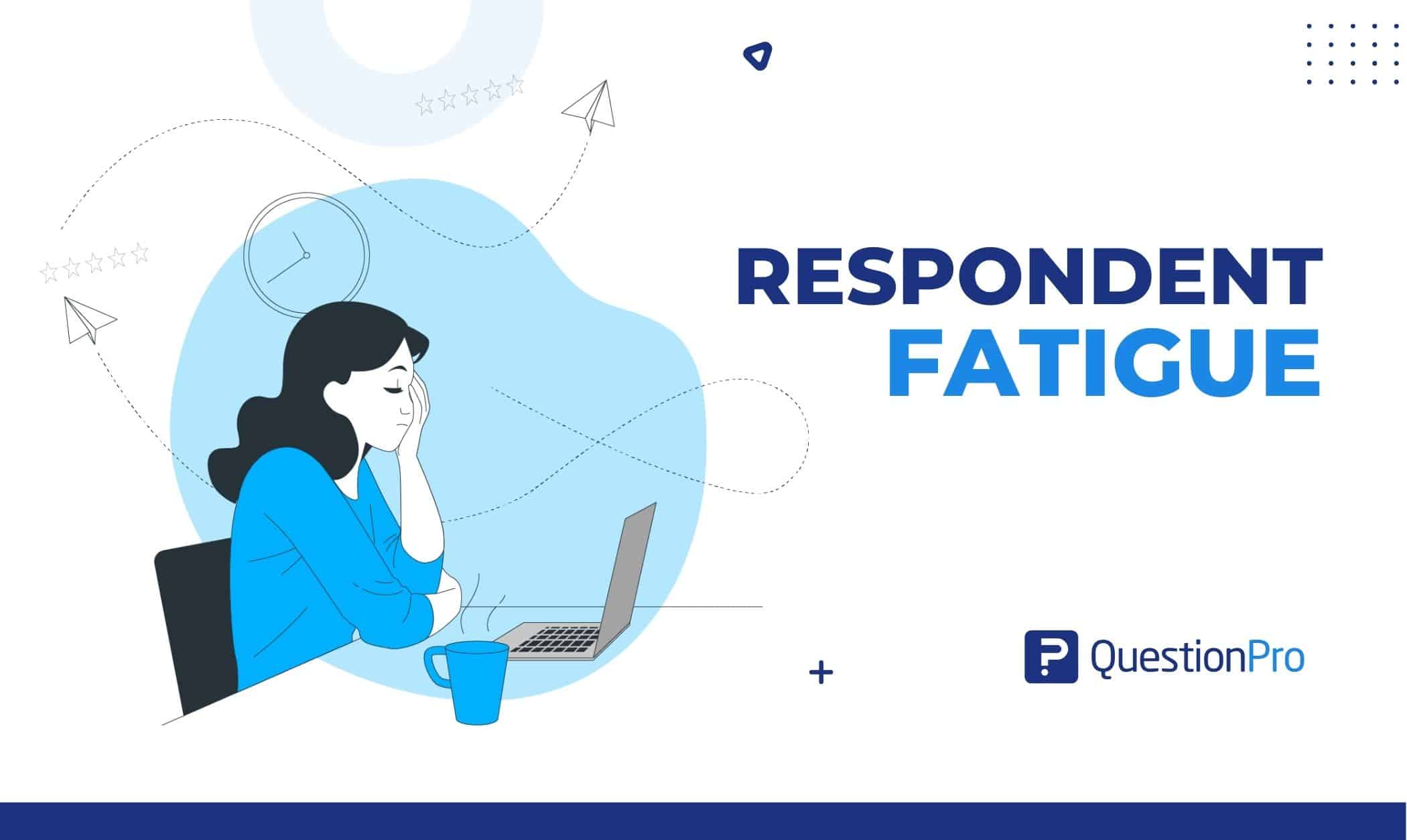 Reading Time: 4 minutes read
Reading Time: 4 minutes read
When people taking part in surveys or research feel weary, tired, or uninterested in the work, their performance or response starts to deteriorate. This kind of fatigue is known as respondent fatigue or participant fatigue. Let’s talk about it and find the solution.
The decrease of motivation and productivity are often referred to as fatigue effects, and can be either purposeful (e.g., selecting the same letter for each question without reading the questions) or unintentional (e.g., ending a survey altogether).
When making questionnaires, it’s essential to ensure they don’t make people too tired because that could change the data and the possible study results.
So in this blog, respondent fatigue will be explained along with its causes and solutions.
What is Respondent Fatigue?
Respondent fatigue frequently happens when the participant grows weary of taking the survey that is required of them. In the later stages, the participant’s focus and motivation will wane, affecting the caliber of their responses.
When analyzing the data, it’s simple to spot signs of respondent tiredness because people frequently respond with “don’t know” or similar expressions. Participants who are asked to circle their responses may react in a “straight line” (picking all the answers in the same row or column).
When designing a research study, minimizing or eliminating respondent tiredness is a top priority because doing so will ensure that the data is as accurate as possible and make analysis easier after the study is complete.
Researchers can accomplish this by ensuring the survey is brief and the participant is given only a few questionnaires at a time. Choosing the correct participants is also crucial to ensure that people respond to questions on a subject they are interested in.
For example, a researcher is speaking with customers who have left a particular store to find out why business is declining at supermarkets. Because they could grow angrier over being unable to complete what they were doing, surveying participants while engaged in another activity increases the risk of respondent fatigue.
Therefore, the survey must be brief and straightforward to collect the most accurate results.
Cause and solutions of respondent fatigue
Respondent fatigue is a well-known phenomenon that happens when survey participants get weary of the survey task, and the quality of the data they offer declines.
- It happens when survey participants lose interest and enthusiasm for subsequent questionnaire sections.
- Respondents who are worn out or bored may provide more “don’t know” responses, choose answers in the same column on the same page, or give up on the questionnaire.
As a result, when choosing the length of the questionnaire, the order of the questions, the survey design, and interviewer training, it is crucial to consider the causes, effects, and potential methods of assessing and controlling respondent weariness.
The result of participants growing weary and uninterested throughout protracted or demanding study events. Data quality may be impacted by respondent fatigue due to incorrect or illegible responses or respondent withdrawals.
Here are some suggestions to assist in lessening respondent fatigue and increase the effectiveness of data gathering in the future.
- Mix up the surveys
If you’re surveying to find out what people think about a workshop or class, add a few questions about your unit’s brand or how it uses social media, so you don’t have to do separate market research later in the year.
- Shorten the survey
Before you publish a survey, carefully review the questions and consider how you’ll use the information you gather.
Are all the inquiries “need to know” questions, or are some “good to know” queries? To make your surveys shorter and more likely to be completed, think about removing or rotating the “good to know” questions.
- Implement best practices for surveys
Double-examine the fundamentals in your surveys, including
- Terminological consistency (do you alternate between “U of I” and “UIUC” in the survey?
- Consistency of the available alternatives (e.g., having one scaled question with the low end of the scale on the right but the next one with the low end of the scale on the left),
- Ensuring that everyone has a choice of answers by including “None of the above” or “Other” answer alternatives,
- Not asking questions with two possible answers, such as “How happy were you with the workshop’s content and instructor?”
- Define acronyms to make sure the person answering understands what you’re asking. Respondents will only abandon poorly written and designed surveys after they are finished.
- Streamline your surveys
Several free and easy-to-use survey programs are available, but many need to gain the contemporary features that respondents are accustomed to seeing in surveys today.
Utilize modern technologies like QuestionPro to enhance your surveys’ visual attractiveness and improve data collection and survey programming like
- Piped or personalized text,
- Dichotomous question,
- Skip logic,
- Question randomization,
- Likert scale questions,
- Multiple choice questions,
- Rank order scaling question,
- Text slider question,
- Semantic differential scale,
- Stapel scale question,
- Comment box open-ended questions,
- programming-exclusive answer options or answer randomization etc.
Conclusion
Some of the causes and remedies for respondent fatigue are described in this blog. To reduce respondent fatigue, surveys should be planned appropriately and powered with an understanding of the characteristics of the respondents that may be associated with more excellent rates of respondent fatigue.
It should be expected that different providers may experience varying levels of respondent fatigue. Open-source sources of information will likely become more frequent as the usage of large-scale analytics increases.
QuestionPro is available to assist you and provide information on your surveys.
The many features and resources offered by QuestionPro can help you combat respondent fatigue. If you want to conduct your fair, agree with, or disagree with research, use QuestionPro immediately.




















